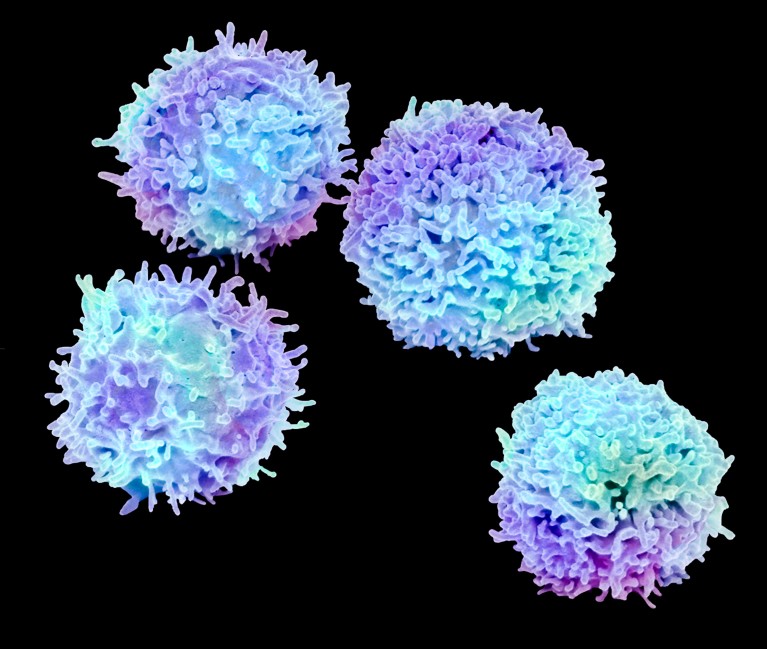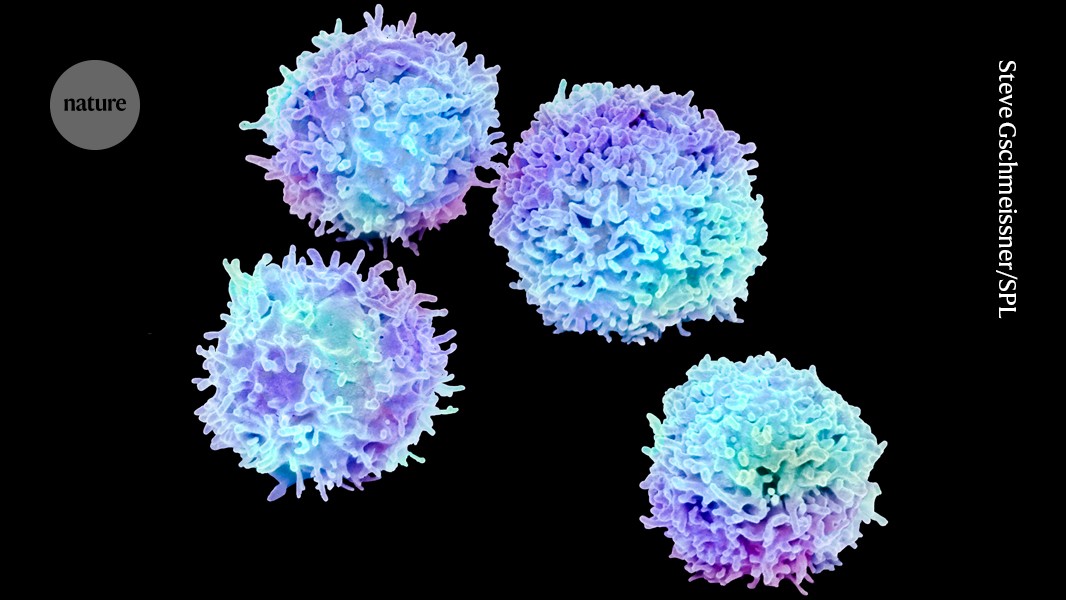
Some types of T cells (pictured, artificially coloured) kill infected cells, but others help to suppress inflammation. Credit: Steve Gschmeissner/Science Photo Library
The class of immune cells at the centre of Monday’s Nobel prize is showing promise as a treatment for autoimmune diseases, cancer and even organ transplants — but there are still key challenges to overcome before these cells can be used in therapies in the clinic.
Regulatory T cells, or Treg cells, help to prevent the body from attacking its own tissues. Earlier this week, the Nobel Prize in Physiology or Medicine went to three scientists who discovered Treg cells and helped to show how these cells regulate the immune system: immunologist Shimon Sakaguchi at the University of Osaka in Suita, Japan, Mary Brunkow, a molecular biologist at the Institute for Systems Biology in Seattle, Washington, and scientific adviser Fred Ramsdell, at the firm Sonoma Biotherapeutics in San Francisco, California.
Cracking the genetic code of autoimmune disease
Thirty years after Sakaguchi and his colleagues reported the discovery of Treg cells, there are more than 200 clinical trials of the cells under way, for conditions such as type 1 diabetes, motor neuron disease and a host of autoimmune diseases — including multiple sclerosis, lupus and a group of rare skin disorders called pemphigus. The cells are also being tested for their ability to keep the immune system from rejecting transplanted tissues.
“There’s a lot of excitement about recruiting regulatory T cell activity to treat a range of autoimmune or inflammatory disorders, but also in the context of tissue and cell transplants,” says Daniel Gray, a Treg-cell researcher at the Walter and Eliza Hall Institute of Medical Research in Parkville, Australia.
But the rarity and fragility of these cells pose difficulties to their widespread application, researchers say.
Finding the balance
Autoimmune diseases are characterized by an imbalance of T cells: people with these conditions have more T cells that promote inflammation and kill disease-causing cells than T cells that reduce inflammation, says Joshua Ooi, who studies Treg-cell therapies for lupus at Monash University in Melbourne, Australia. “We can correct the balance by increasing the numbers of regulatory T cells,” he adds, which can help the body to suppress the pro-inflammatory T cells.
Two methods to increase the number of Treg cells a person has are gaining ground, Ooi says. The first involves isolating a person’s Treg cells, growing more of them in the laboratory and infusing them back into the individual. The other method involves injecting people with drugs that trigger the body to make more Treg cells.
Medicine Nobel goes to scientists who revealed secrets of immune system ‘regulation’
Because Treg cells can control an overactive immune system, scientists are investigating them as a therapy to counter the side effects of bone marrow transplants, which involves building a new immune system in people with blood cancers, says Andrea Henden, a clinician–researcher at the QIMR Berghofer Medical Research Institute in Herston, Australia.




